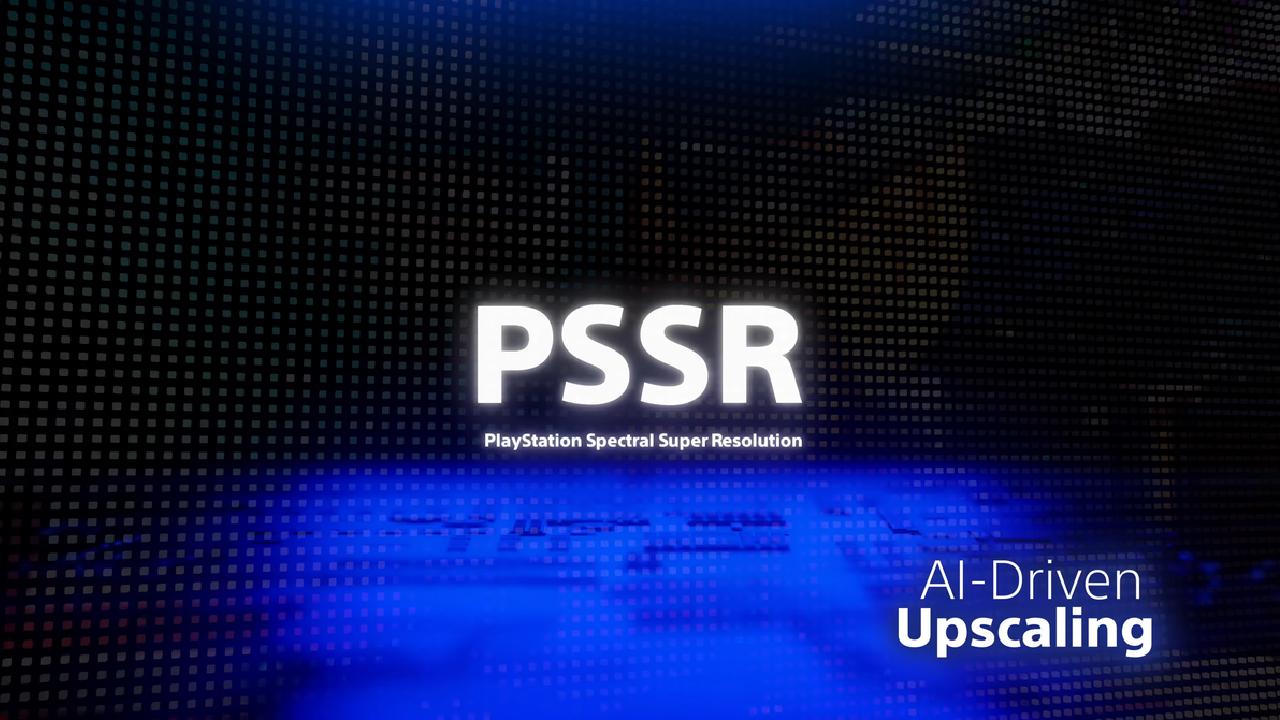The current Ninth Generation of consoles released in 2020 and so it seems that the time of the Xbox Series X/S and PS5 is quickly coming to a close, with 2026/2027 seeming to be when we are most likely to see this generation’s end.
But outside of some suggestions from higher ups that support this release window, it’s in the last few days that we’ve possibly had our first true glimpse of when the next generation of consoles might be releasing.
With sources reporting on a cancelled Blade Runner game slated for release in September 2027 on current consoles, and the next generation on PlayStation and Xbox systems, this is the most solid lead we have so far for a possible release date and one that seemingly supports the much speculated dates of 2026/2027.

But what else do we know about the future consoles so far?
Despite potentially only being a year away it’s still very little, but we easily have enough to work with to wildly speculate.
The Power of AI
Both consoles are set to be more closely tied to AI technology. Whether this is something that will be built into the console itself, or will just be support for developers remains to be seen.
A video released by The Verge alleges that Sony, alongside Horizon series developer Guerrilla Games, is working on AI powered characters for Sony’s first party games. The video, shared to The Verge by an anonymous tipster, and subsequently removed from YouTube via a copyright claim from Sony, allegedly showed Sharwin Raghoebardajal (a director of software engineering who specializes in AI technology at PlayStation Studios), demonstrating the capability of an AI powered version of Horizon protagonist Aloy.

The AI prototype reportedly uses Sony’s Mockingbird technology to match face movements to AI generated voice-work, with the claim being that the AI Aloy would be able to hold a conversation with the player through in-game prompts.
The use of AI within the medium has already faced strong backlash from within the industry, with Aloy voice actor Ashly Burch calling the use of AI a “huge concern for our professions…” and a swathe of anonymous developers publicly voiced their concerns about the inclusion of AI tools in the development process when Xbox announced plans for their Muse AI tool.
Xbox ’26
The Xbox ’26 is the console we know the least about so far, and what we do know seemingly revolves more around Xbox’s general plans for its approach to the industry going forward but, with a lot resting on the next Xbox console after Sony’s rival console has stormed ahead of Xbox systems for two generations in a row now, there is a lot of pressure on the next Xbox console performing strongly… or is there?
Flexibility
Rumors abound around the Xbox, with some insiders suggesting that the next Xbox console will be closer to a PC than a traditional console. With some speculation that the console will be similar to Valve’s failed Steam Machines, the next generation of Xbox console has been described as a PC in a TV friendly shell and that Microsoft intend for the console to be wildly variable, allowing other manufacturers to produce Xbox consoles to their own specifications, shifting Xbox to take on a role of a console OS, similar to how Microsoft currently operates with Windows-based PCs.
On the Xbox side of things, this is mostly conjecture and speculation at this stage. Xbox have suggested they are looking to be more ‘flexible’ in the upcoming generation but further details have mostly come via tweets from Windows Central’s Jez Corden.
Hi, I’m a Mac…
A LinkedIn job listing for a ‘Principal System On Chip Silicon Architect’, has led to some speculation that the Xbox ‘26 will include a chip-set similar in architecture to M1 & M2 processors found in Apple’s MacBook. M2 processors with ARM chips have been found to be quite effective in tables and the Nintendo Switch for providing chips capable of playing a range of games and it seems Xbox might be seeking to move in a similar direction, however, the constant expectation of more powerful systems from gamer’s means Xbox would be looking for a more drastic leap forward in power. The Switch, while innovative, has proven time and time again to not be able to match the current generation of consoles for raw power.

Xbox President Sarah Bond, speaking on the Official Xbox Podcast, promised that Xbox is “… focused on … delivering the largest technical leap that you will have ever seen in a hardware generation.”
Microsoft Gaming CEO Phil Spencer also shed some light on the expectations of the next Xbox to provide innovation in the console space, describing the Xbox ‘26 as “…an unleashing of the creative capability of our hardware team…”
Features
Very little is known at this stage of the Xbox’s features, but we can speculate based on some comments made by Xbox President Sarah Bond. While it’s becoming clear that Xbox intends for the console to be a big leap forward in terms of its hardware, they are equally keen to not leave the past behind.
In a Bloomberg Live interview, Bond discussed the importance of backwards capability for the next Xbox console. In the interview she explains how one of her first acts as Xbox President was to create a team focused entirely on backwards capability, stating that she appreciated that “…we have people who’ve been playing on Xbox for decades and invested thousands and thousands of dollars and hours with us. And [we want to enable them] to take all those games with them into the hardware of the future.”

What is certainly clear, is Xbox intends to continue its commitment to making its games more accessible to not only those invested into the Xbox ecosystem, but with gamers at large. In fact, over the last few years Xbox have been making it increasingly clear that they aren’t too bothered if you buy an Xbox or not, with recent adverts for the range of Xbox games on Amazon’s Fire TV Stick suggesting it as an Xbox alternative and even Phil Spencer himself claiming Xbox is far more interested in enticing players to the ecosystem as a whole rather than to their console specifically.
With this being the mindset, it seems that the Xbox ‘26 will likely feature more options for players to collaborate and share with others. Though the details of it remain obscured at the moment, we can speculate this will mean further support for cross-platform games and a further push for Xbox titles and services to be made available on as many platforms possible, including even the PS6.
PlayStation 6
Speaking of the PlayStation 6, it’s safe to say that we know slightly more about it than the Xbox ‘26 despite it likely being a little further out.
Unlimited Power
Rumours suggest that two chips are being developed for the PS6, and set to be manufactured by AMD.
The rumors, stemming from comments made by known hardware insider KeplerL2 on NeoGaf, suggest that this may be to facilitate a handheld PlayStation device releasing alongside the PS6, similar to the current PlayStation Portal. Though the dual chip-set could also be indicative of a dual console release, similar to Xbox’s current offering with the Series X and Series S.
It’s speculated that if this second chip is for a handheld device, it would be fully capable of running full games, but it is unclear if this would be through streaming or local installs.
The chip itself, KeplerL2 suggests, will be a Zen6 running on N2 architecture and an early fork of gfx13, aka AMD RDNA5 which, if you are as unfamiliar with what any of that means that as I am, reportedly means the new chip will easily eclipse the current capabilities of the PS5.
Release Date
Speculation for the PS6’s release has generated a few clues to suggest a 2027 release. The aforementioned comments from KeplerL2 suggest the console is currently in a testing phase ahead of a 2027 release; in 2024 Sony Senior Vice President Naomi Matsuoka told bloomberg that “Looking ahead, [the] PS5 will enter the latter stage of its life cycle.”, while court documents submitted during Microsoft’s acquisition of Activision Blizzard stated that “By the time SIE [Sony Interactive Entertainment] launched the next generation of its PlayStation console (which is likely to occur around [redacted]), it would have lost access to Call of Duty.” suggesting that Microsoft at least, felt the next PlayStation was unlikely to be available by the time the deal Microsoft offered Sony to keep Activision Blizzard games on PlayStation consoles elapsed in 2027.
Add these snippets to the recent news that the canceled unannounced Blade Runner game in development by Supermassive Games was set to release in September 2027 on both current and next gen consoles, and it paints a fairly strong picture that late 2027 is a likely release window for the PS6.

That being said however, former PlayStation executive Shuhei Yoshida spoke to Venture Beat about possible timings for the PS6, and while denying knowledge of the console’s release date, suggested that the life cycle of the PS5 had been slowed due to the manufacturing issues experienced early in the consoles life and that due to this, a 2028 release felt more likely to him.
Features
Mentions of the PS6’s features are elusive beyond the expected integration of AI for both consoles.
We do at least know for certain that the PS6’s chips will be AMD due to Reuters reporting on Intel losing the bid for the PlayStation contract to AMD in 2022 and, as AMD produced the chips for both the PS5 and PS5 Pro, this indicates the PS6 could at the very least, be backwards compatible with the current generation.

The PS5 Pro has seen the introduction of PlayStation’s Spectral Super Resolution (PSSR) in order to upscale the console to 4K resolutions through the power of AI. PSSR is likely being built primarily as a feature of the PS6, and a report from Insider Gaming suggested that internal targets for the system are for it to be achieve 4K at 120FPS or 8K at 60FPS – due to the consoles limitations, the PS5 Pro is only able to achieve 4K at 60FPS currently.
The PS5 Pro currently offers 2TB of storage, so we expect this to be a minimum for the PS6, though larger storage will likely be required as games continue to grow in size.
Everything we know
And that’s it. Everything we know about both consoles so far. There’s really not much to go on here, but the most interesting takeaway at this point seems to be a totally different focus from each company, with Xbox shifting its focus to be less centered on the next console and more focused on reaching as wide a range of users as possible, even if that means giving up exclusivity and putting more emphasis on the consoles collaborative features, whereas Sony seem to, understandably, be holding strong with what has been working so well for it during the previous two generations.
Based on what we know so far, are you more excited for the Xbox or PlayStation? What features would you like to see from each console? Let us know in the comments or on our social media!








